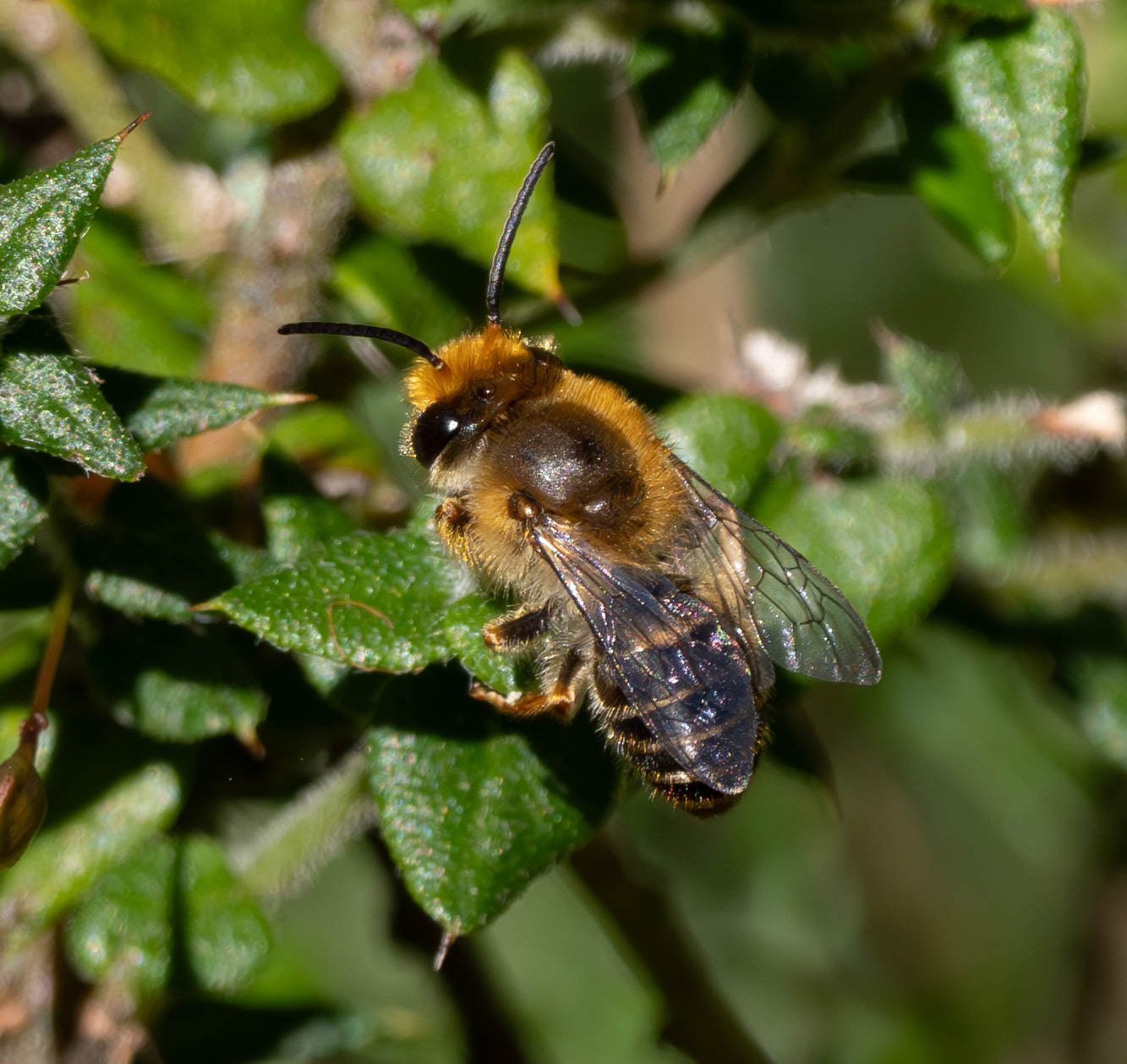
a very early bee
This male is the very first native bee we spotted this season. And he's particularly early this year. Tricholletes usually start to appear mid August.
Trichocolletes venustus (link to iNaturalist record)
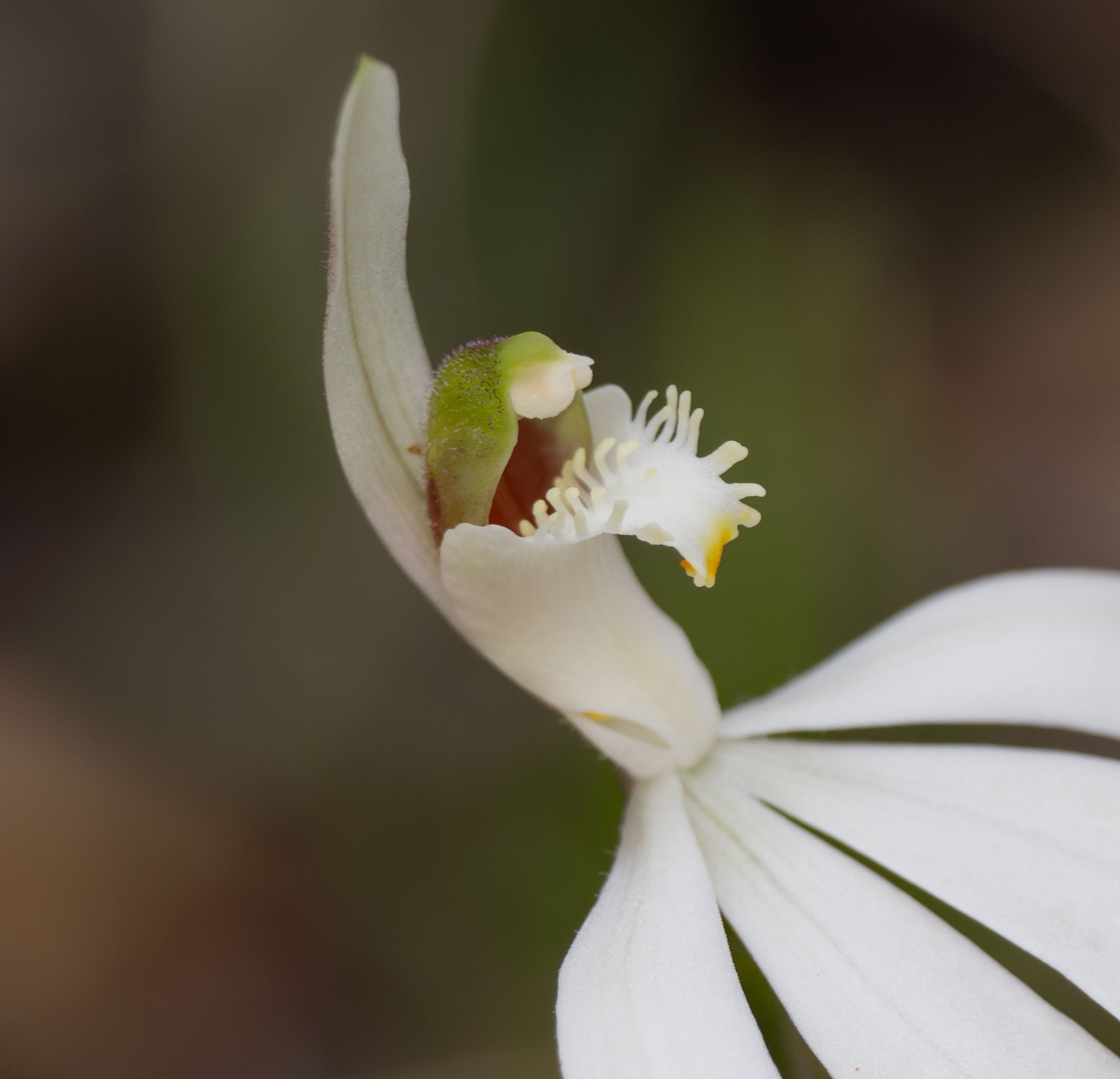
first of many
... spring-flowering orchids. This year we anticipate a good orchid show. Last spring's offering was dismal due to a winter drought, but the signs this season are good.
Caladenia catenata (link to iNaturalist record)

mystery bee fly
One of the earliest insect visitors to the Styphelia blooms ... and a type of bee fly I've never seen before. The species identity remains a mystery, as we need the wings to stop moving to be able to tell one species from the other. But even at the genus level it's a relatively special sighting. There are currently just 15 sightings on iNaturalist ... well, 16 now.
Sisyromyia (link to iNaturalist record)
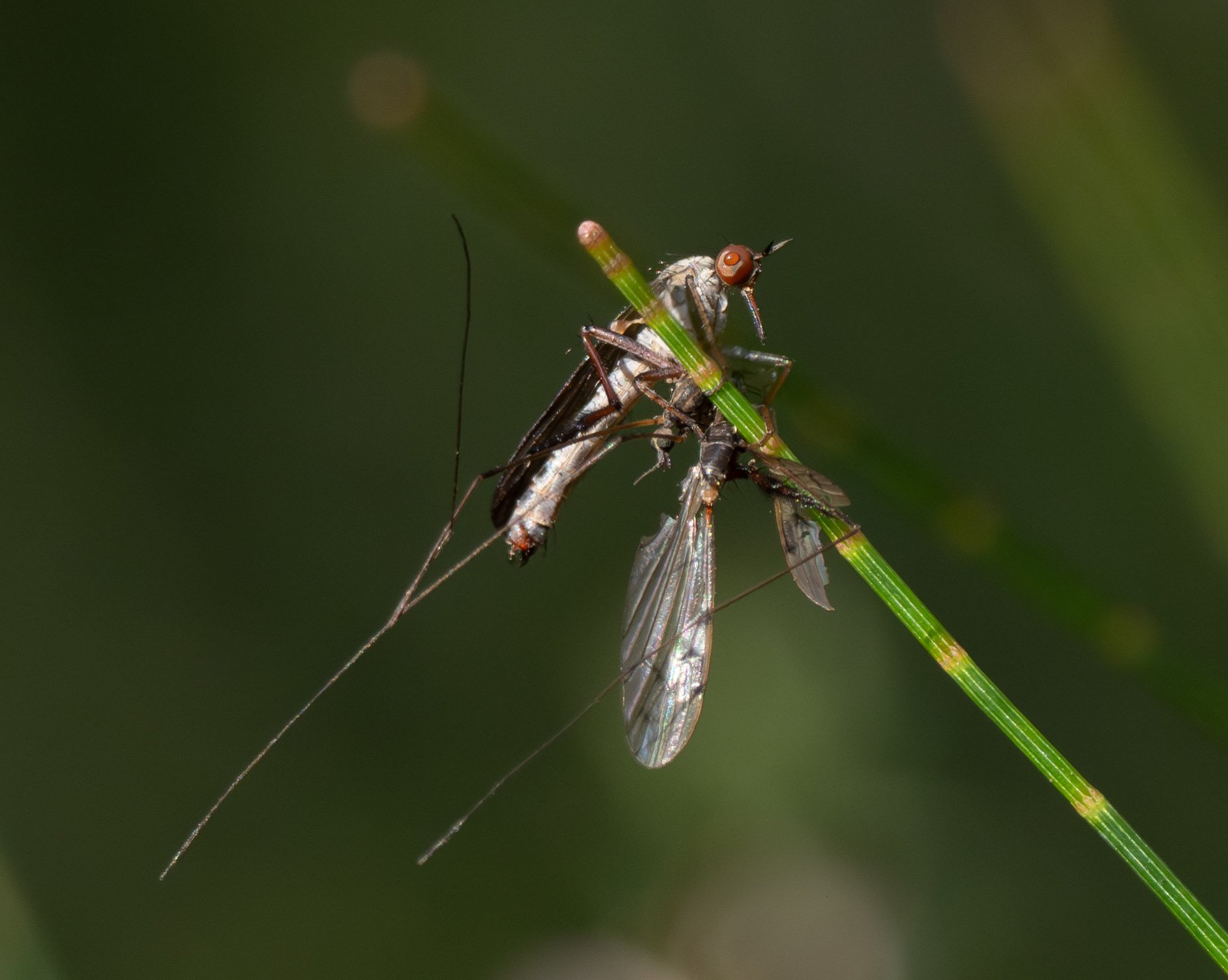
dancing flies
A cloud of long-legged insects, hovering in bobbing flight above a patch of flowering Styphelia bushes, proved to be a mating swarm of Dance Flies (tribe Empidini). This male landed briefly, still gripping his freshly killed prey.
tribe Empidini (link to iNaturalist record)
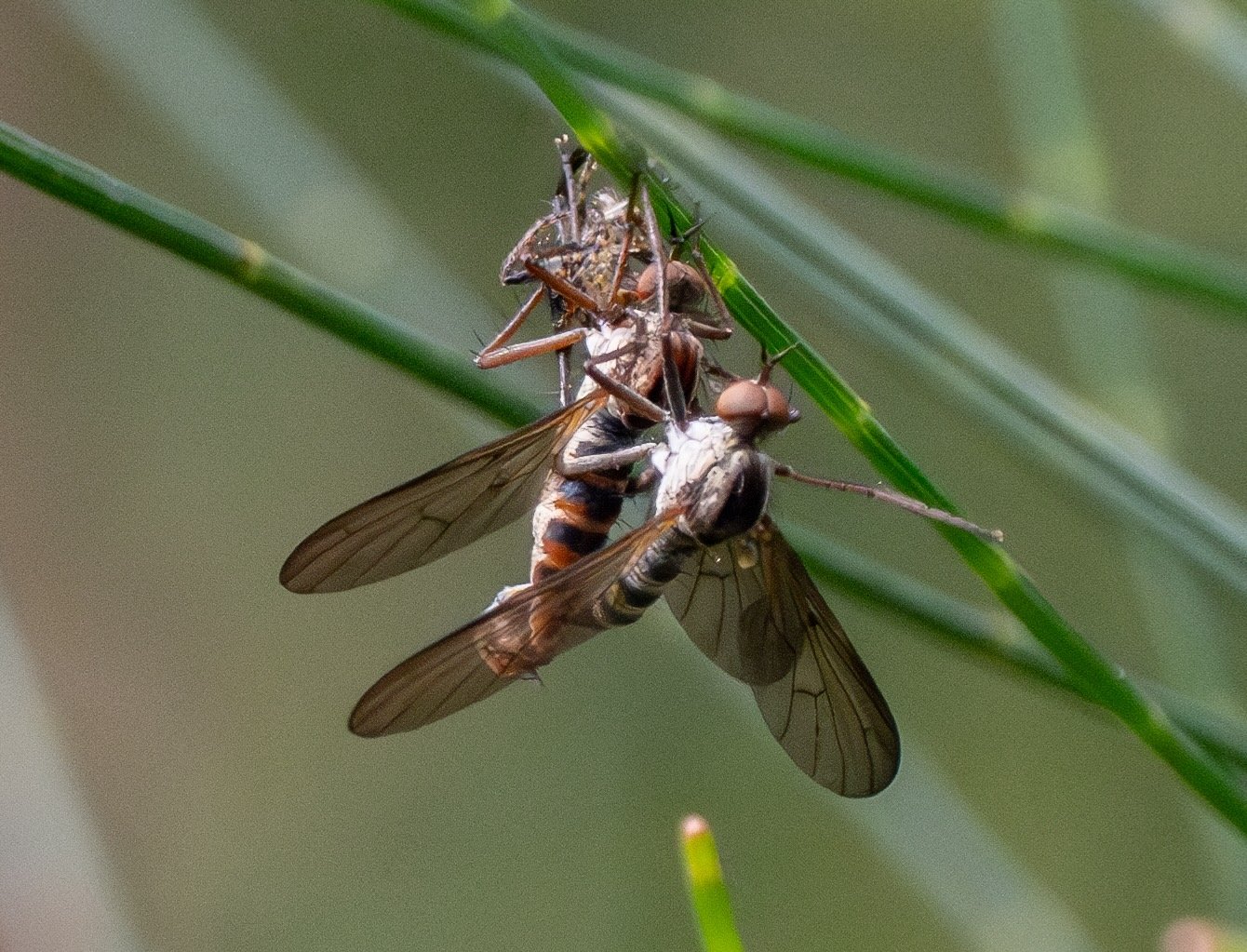
a nuptial gift
Dance Flies kill for their mates. Literally. He gifts her with a freshly killed insect, in exchange for ... well, you know. Females in the subfamily Empidinae are apparently unable to hunt for themselves. If they need protein for egg production they are reliant upon such largesse (Marshall 2012).
tribe Empidini (link to iNaturalist record)
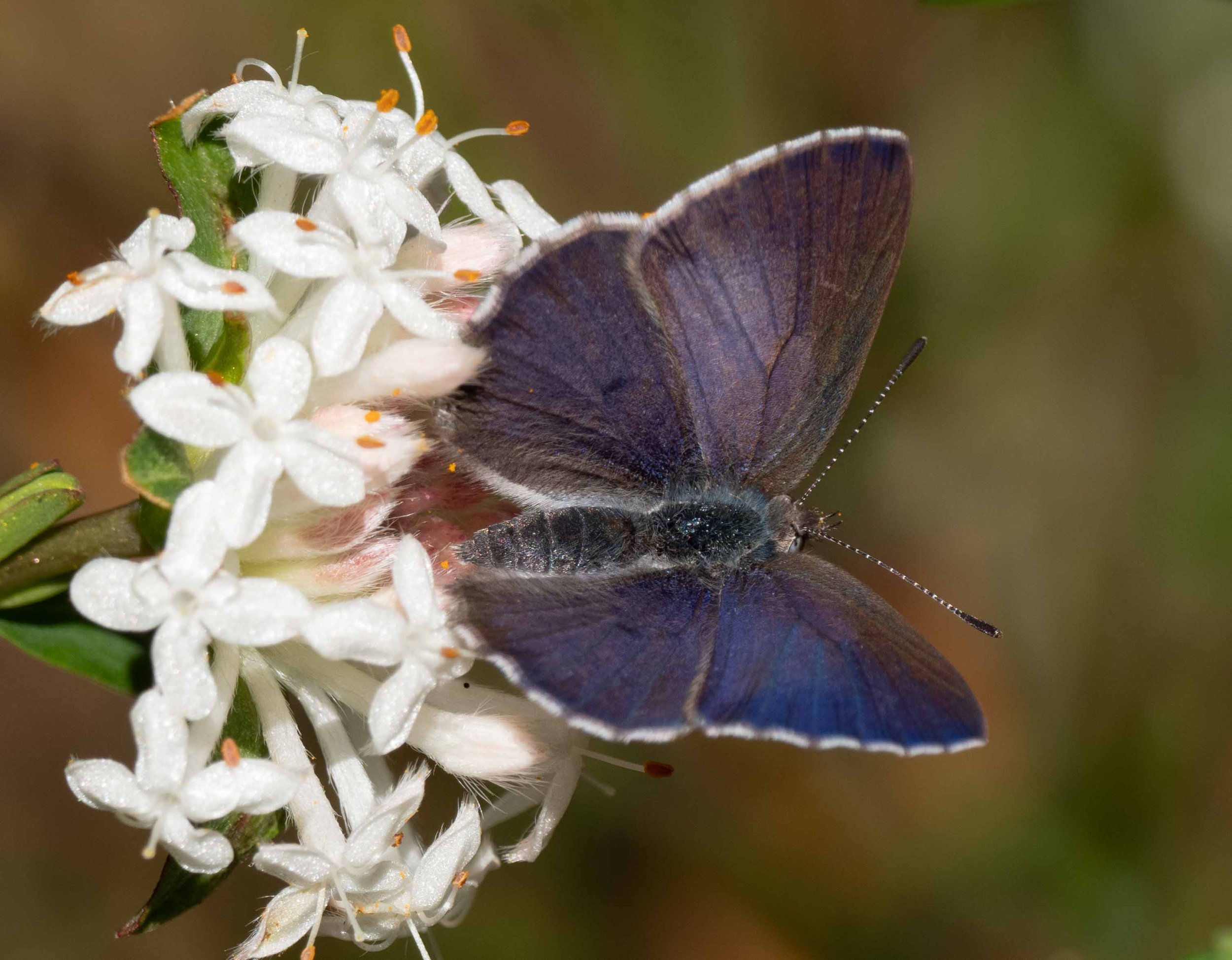
the butterflies are back too
The very first butterfly sighting of the season. This Varied Dusky-Blue is a common, widespread species of heath and open forests in eastern Australia.
Erina hyacinthina (link to iNaturalist record)
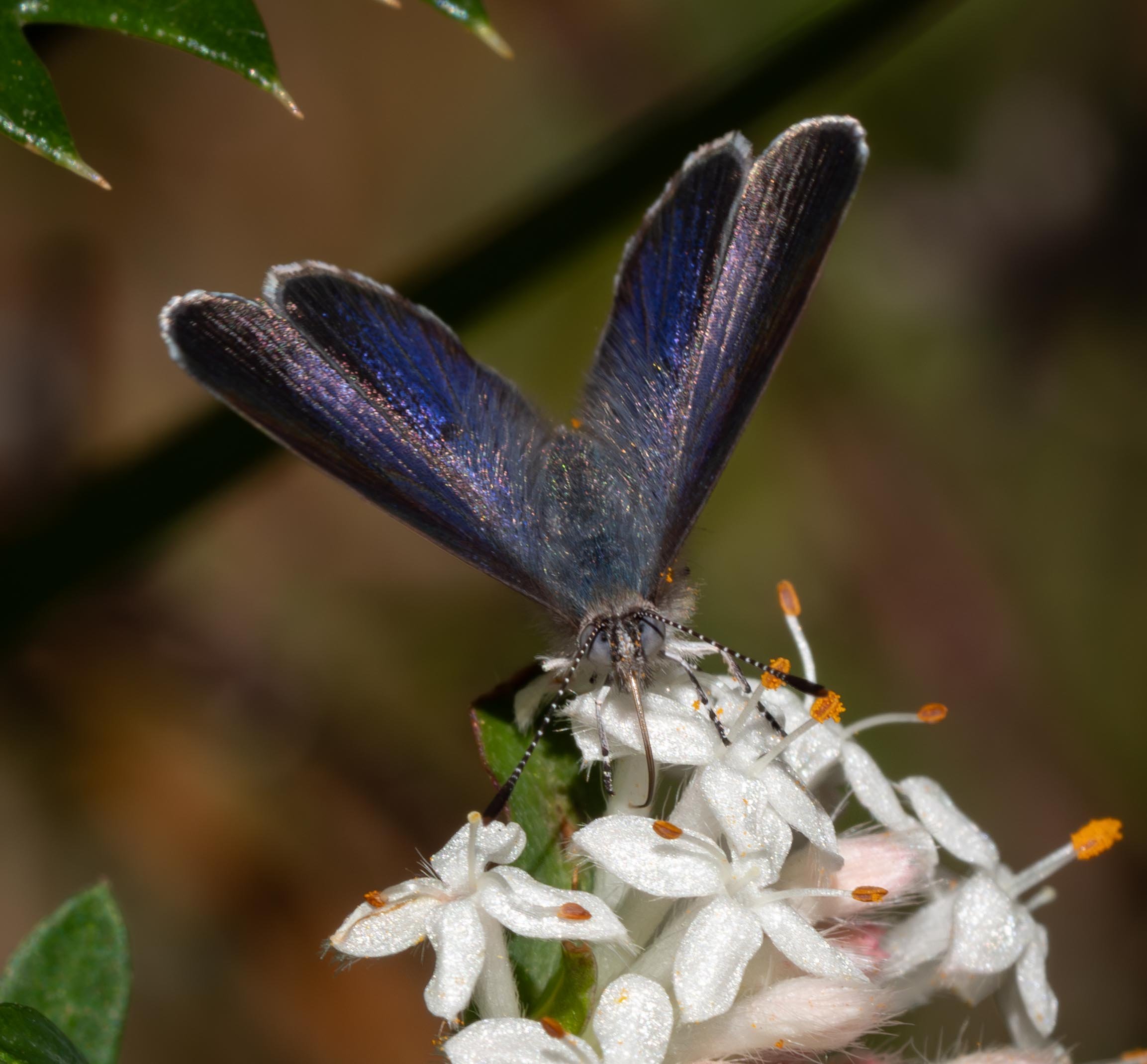
nectar specialists
As caterpillars, Erina hyacinthina feeds on the parasitic vine Cassytha ... which we certainly have plenty of here in the forest. But as with virtually all butterflies, the adults simply take nectar from flowers.
Erina hyacinthina (link to iNaturalist record)

nesting supply depot
Brown Thornbills (Acanthiza pusilla) have been a regular sight at our frog pond of late, stuffing their beaks with seed-bearing hairs from the ripening Cumbungi heads (Typha sp.). I guess the fluffy fibres make a lovely soft nest lining. It is a rather comical performance ... an avian equivalent of kids with fairy floss!
Scroll to the bottom of the page for a short video of the action.
Brown Thornbill (link to iNaturalist record)
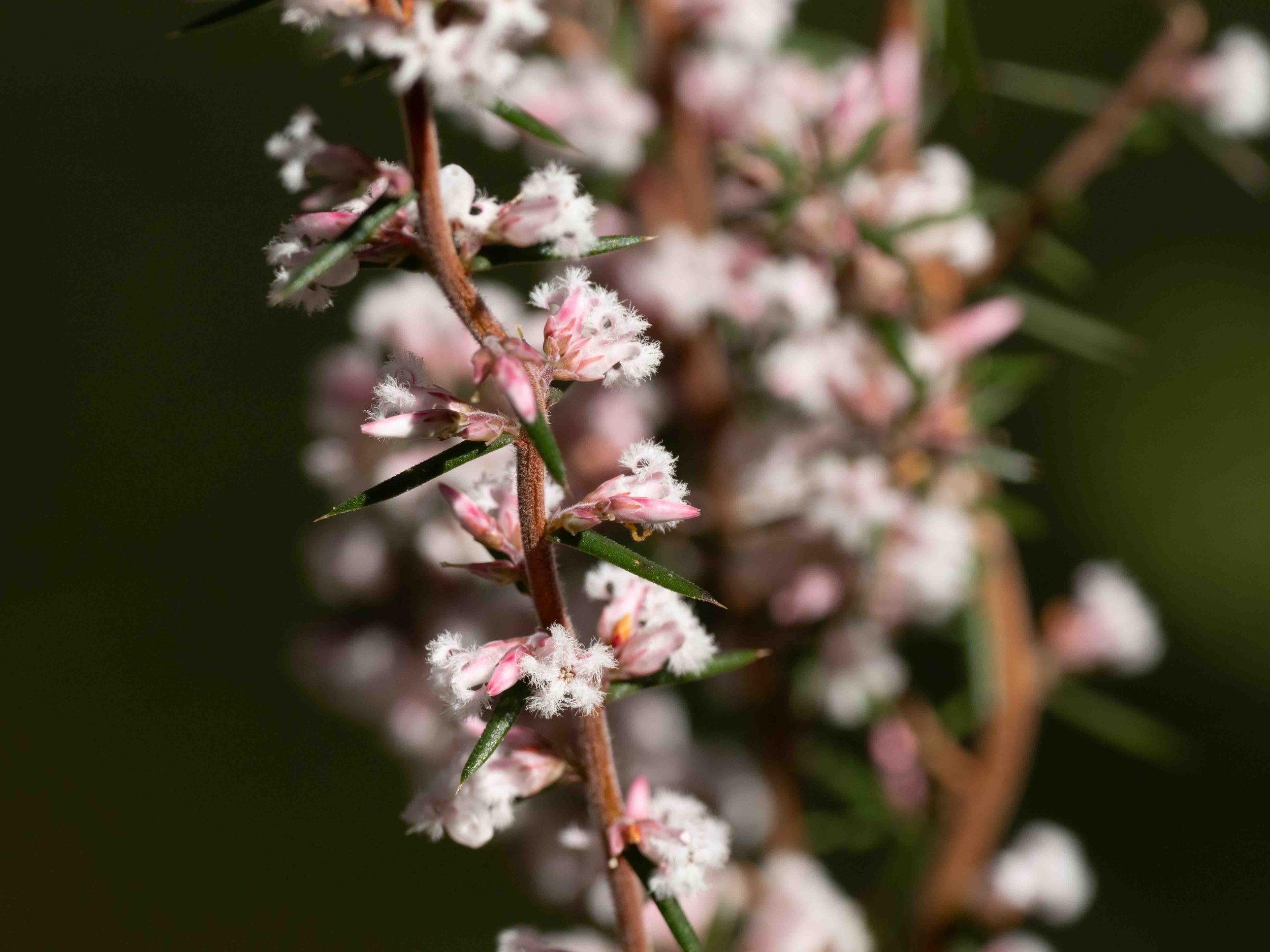
August's signature flower
The sudden profusion of these small, pinkish flowers is the hallmark of spring here in the forest.
Styphelia ericoides

a scented garden
On warm, sunny days the scent from Styphelia is quite glorious ... it smells like vanilla to me. The flowers precede the insect boom, by weeks. I always find that a surprise, but perhaps the earlist visitors are tiny midges and wasps that escape my attention.
Styphelia ericoides (link to iNaturalist record of first flowering ... on 24th July!)
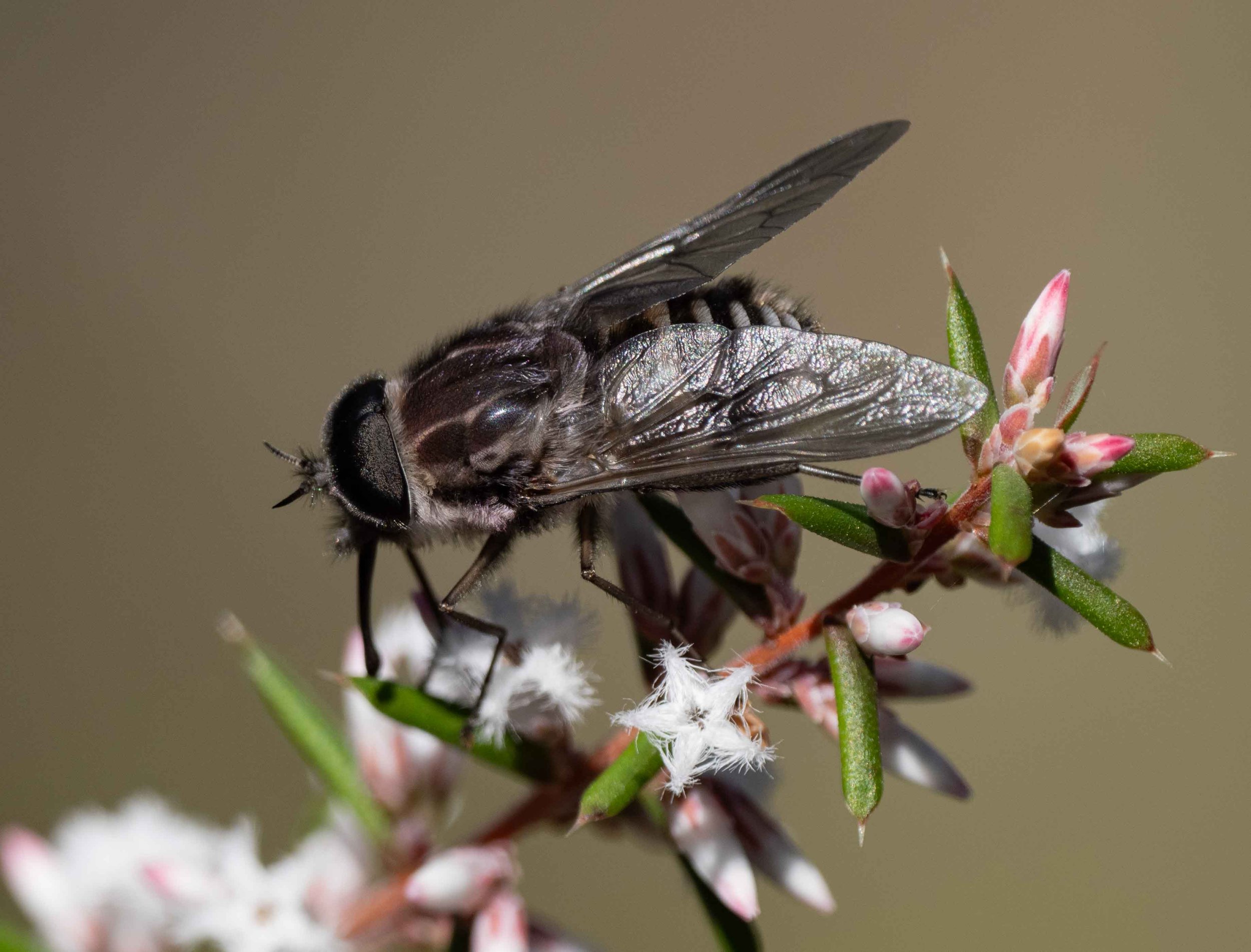
an early march fly
One of the first large flies to appear, they dwarf the tiny Styphelia flowers as they clamber about collecting nectar.
Dasybasis (tbc) (link to iNaturalist record)
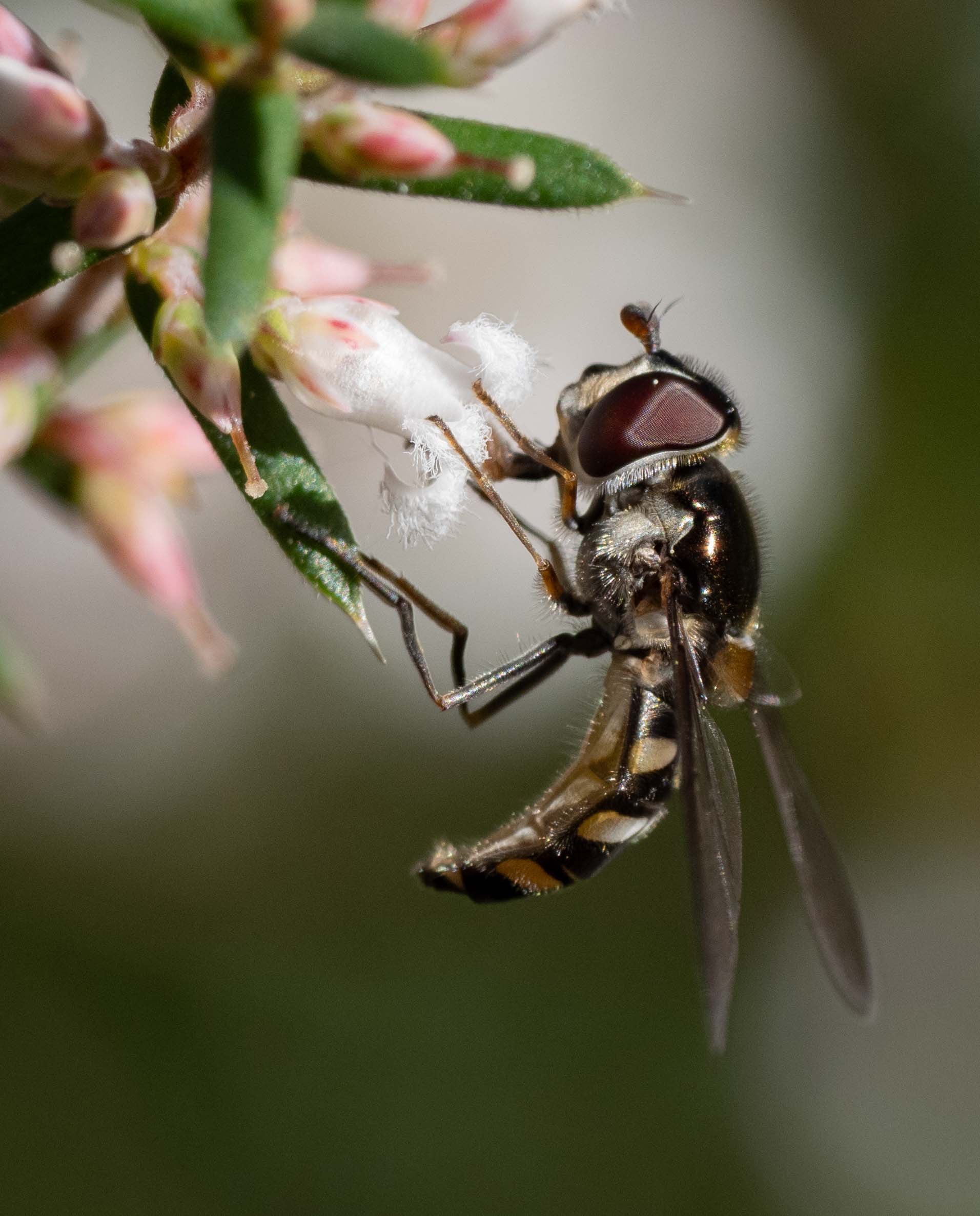
hoverflies – the most popular dipterans
The Syrphidae have been described as "the butterflies of the fly world" and "the most popular group of flies among insect photographers" (Marshall 2012). They certainly gain our attention, but perhaps no more so than their less colourful or less cooperative cousins.
Melangyna sp.
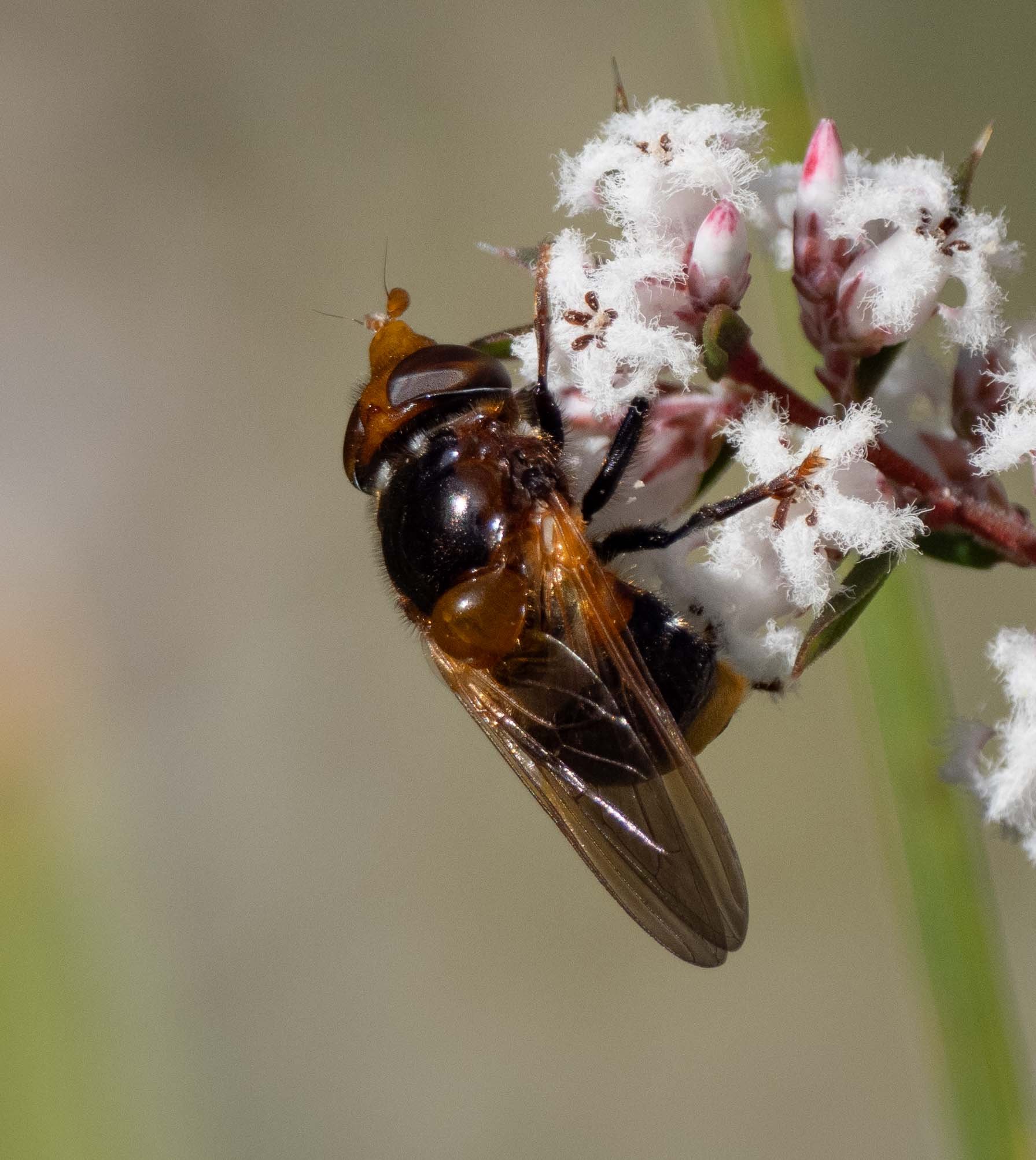
drone flies are hoverflies
Nearly half the world's Syrphidae belong to the subfamily Eristalinae ... commonly called drone flies. Most have larvae that develop in decomposing vegetation, including in wet, rotting wood. And yes, this sluggish & colourful syrphid is certainly photogenic!
Cyphipelta rufocyanea (link to iNaturalist record)
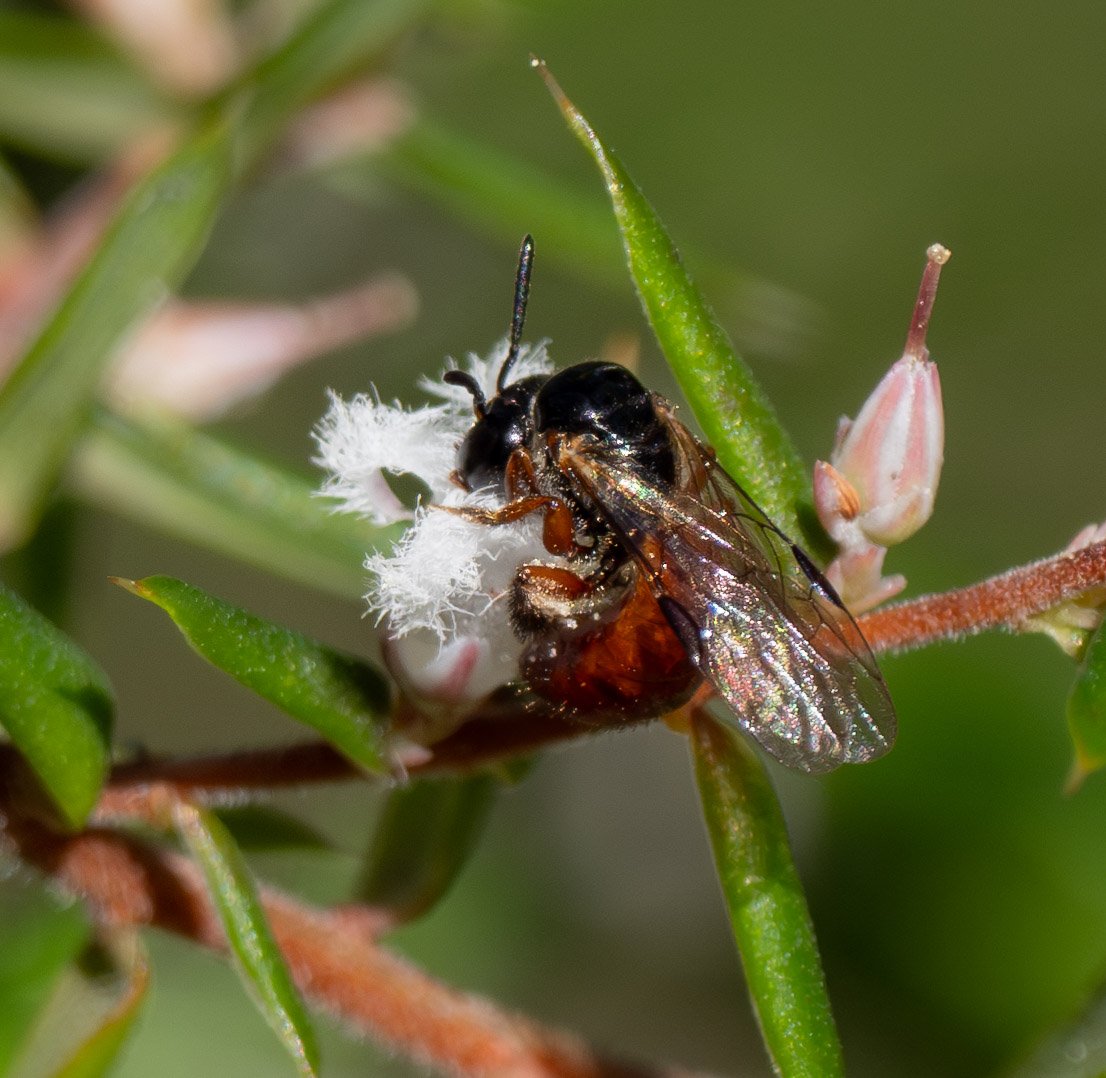
reed bees suddenly appear
I had been checking the Styphelia flowers almost daily all month, and not a single Exoneura in sight. Then in the space of a single day, they became the most numerous group of bees about. Various species in a range of sizes, many (like this very first one) quite small.
Exoneura (link to iNaturalist record)
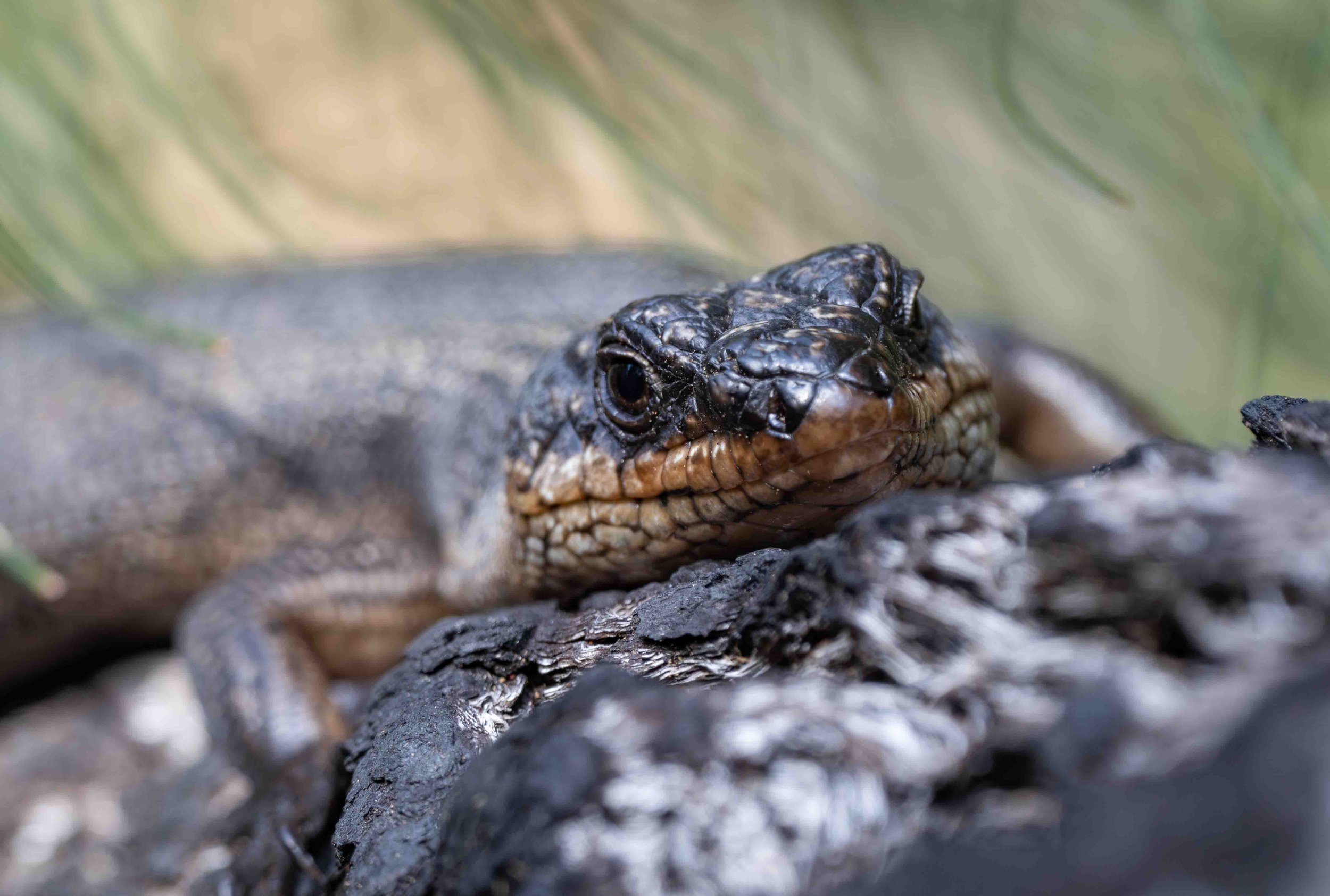
basking skinks
Black Rock Skinks tend to live in family groups ... among rocks. This family has taken up residence in the trunk of a large fallen eucalypt, about a 1.5m above ground. Perfect eye height for me!
Egernia saxatilis (link to iNaturalist record ... and a later sighting here)
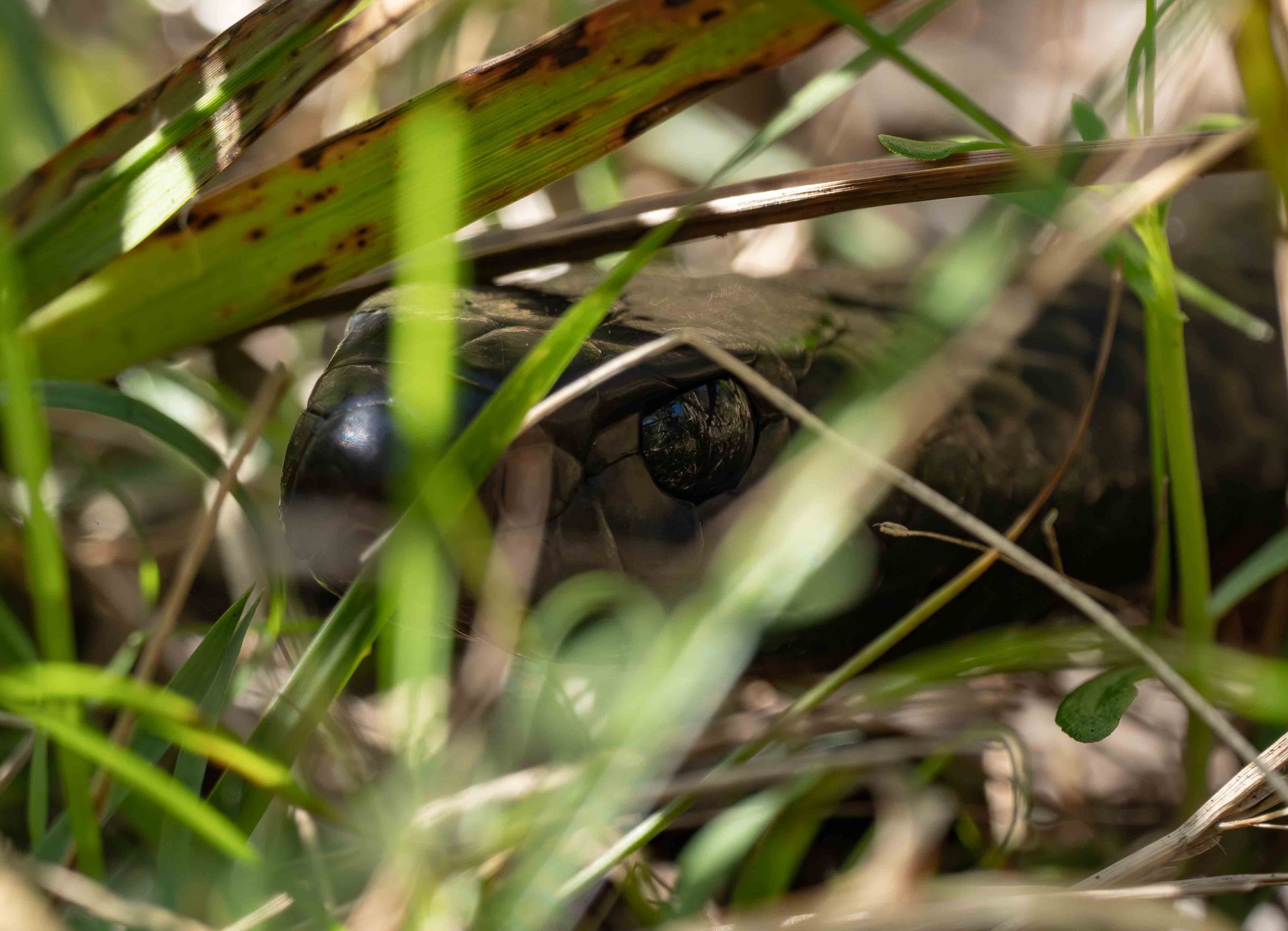
more reptilian eyes
My first snake sighting of spring ... a large, shiny Red-bellied Black Snake. Wary, but also reluctant to move away. Both of us.
Pseudechis porphyriacus (link to iNaturalist record)
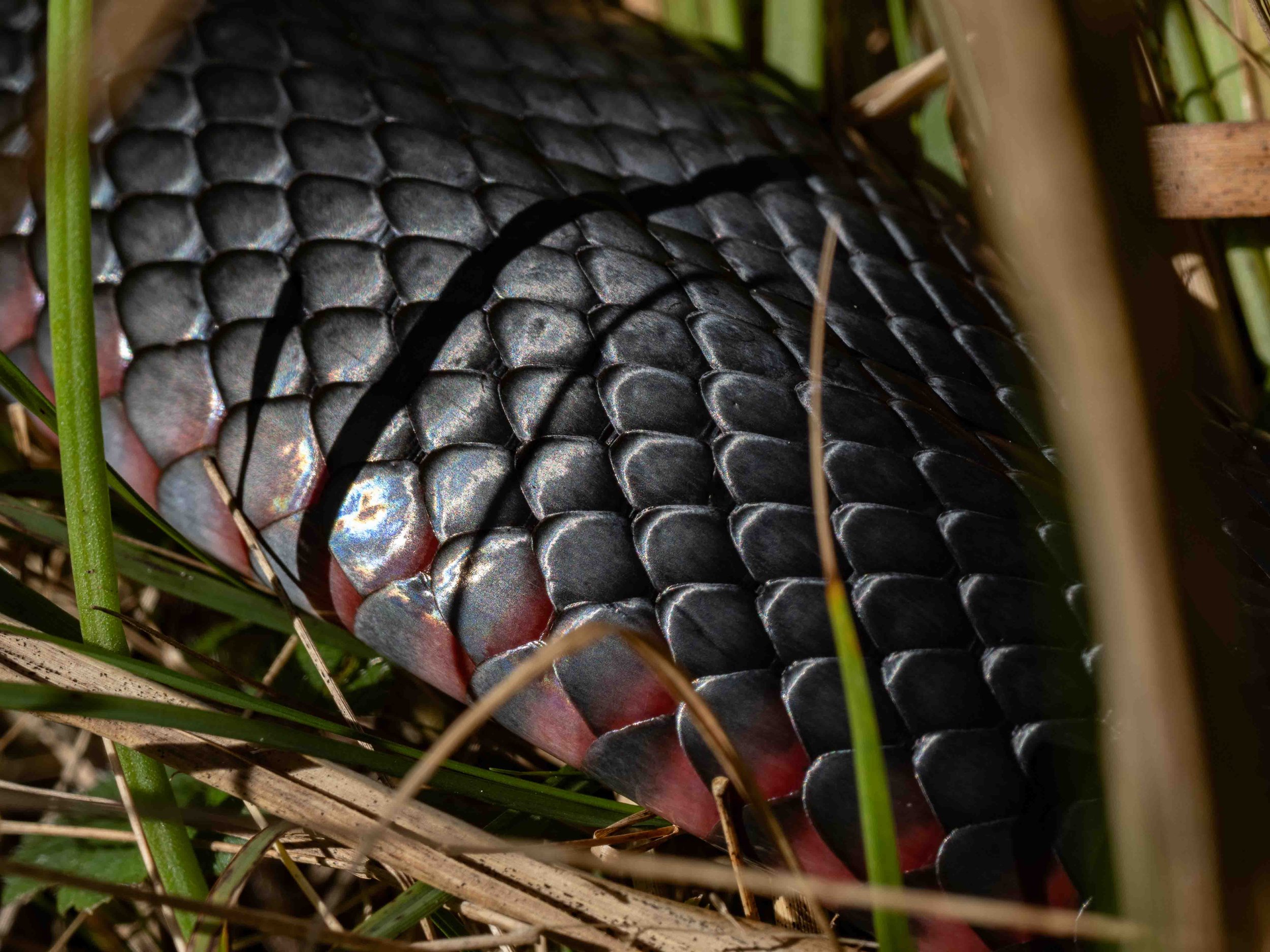
Red-bellied Black Snake
Identification of this species is child's play.
Pseudechis porphyriacus (link to iNaturalist record)
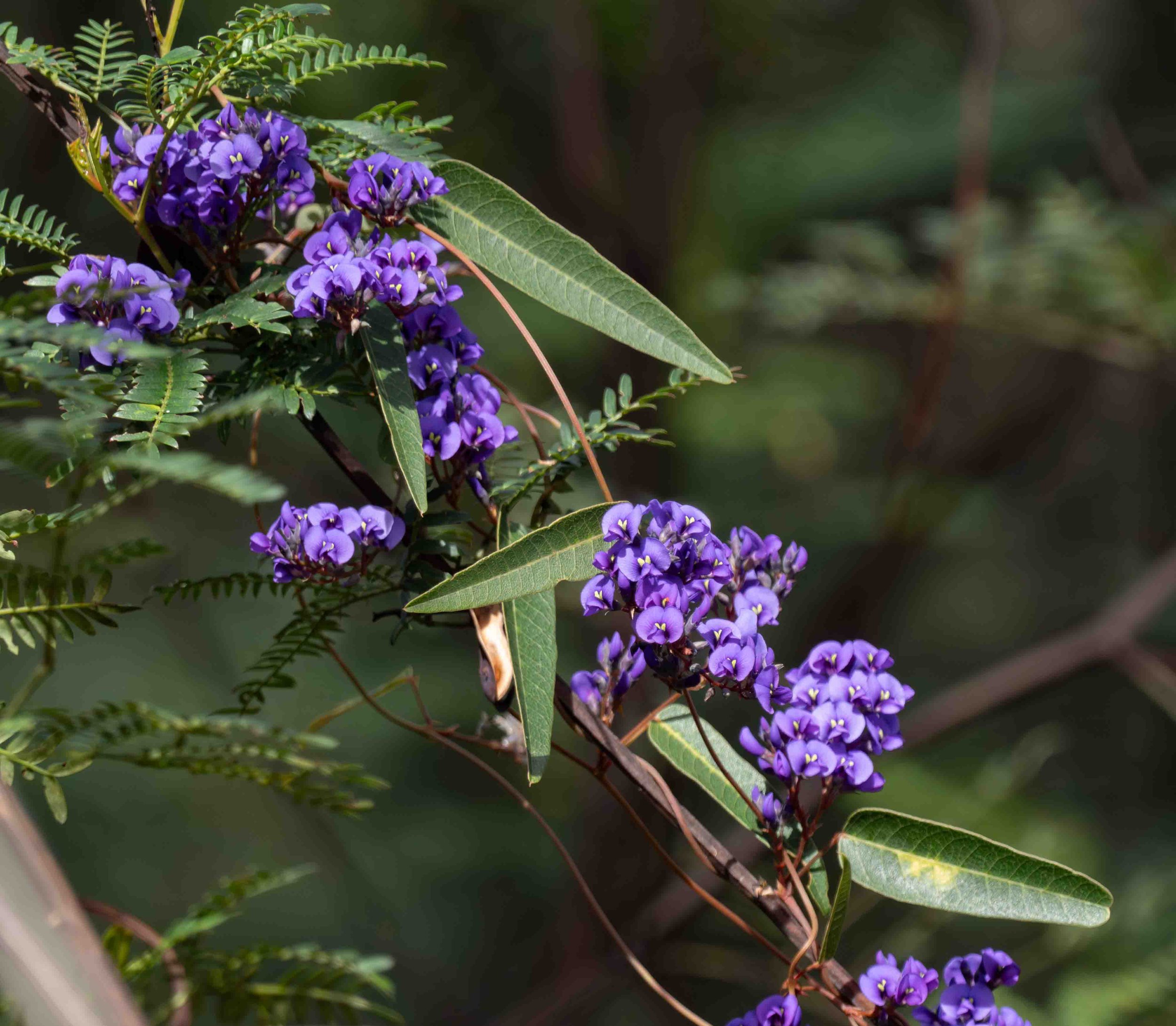
purple peas
Hardenbergia is out in all its glory. The first flowers opened in mid August, and now there are splashes of purple at ground level and adorning the many shrubs seconded by this scrambling climber.
Hardenbergia violacea (link to iNaturalist record)
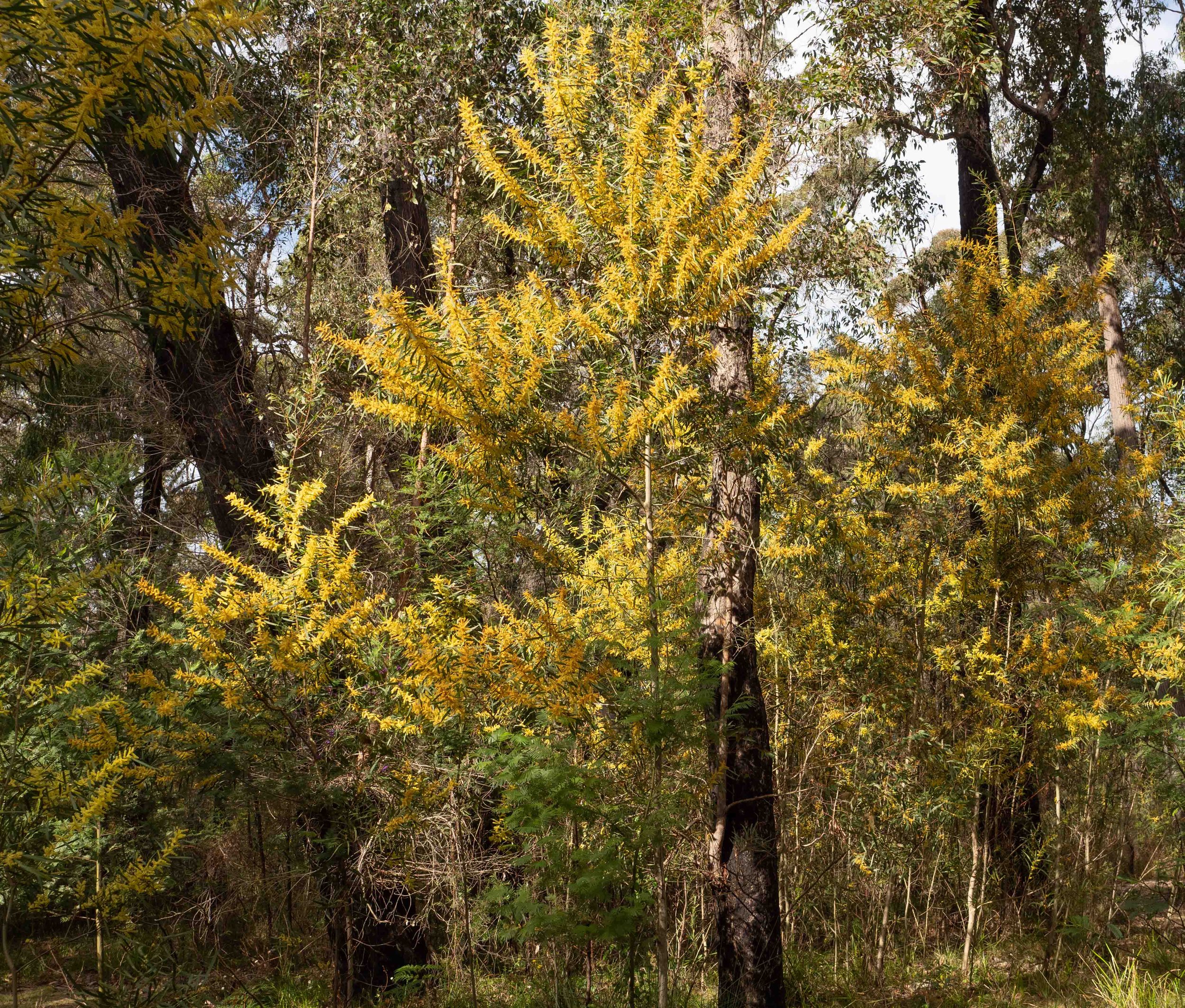
peak wattle (?)
The wattle regrowth here in the forest, post the 2020 bushfire, has certainly been prolific. But just like the dense stands of autumn-flowering Acacia terminalis, Acacia longifolia is already starting to thin out ... due in part to insect attack. In the meantime, it put on a brilliant early-spring show this year.
Acacia longifolia

insect attack
The beautiful but deadly leaves of the sundew. The delicate pink flowers began to appear at the end of August.
Drosera auriculata
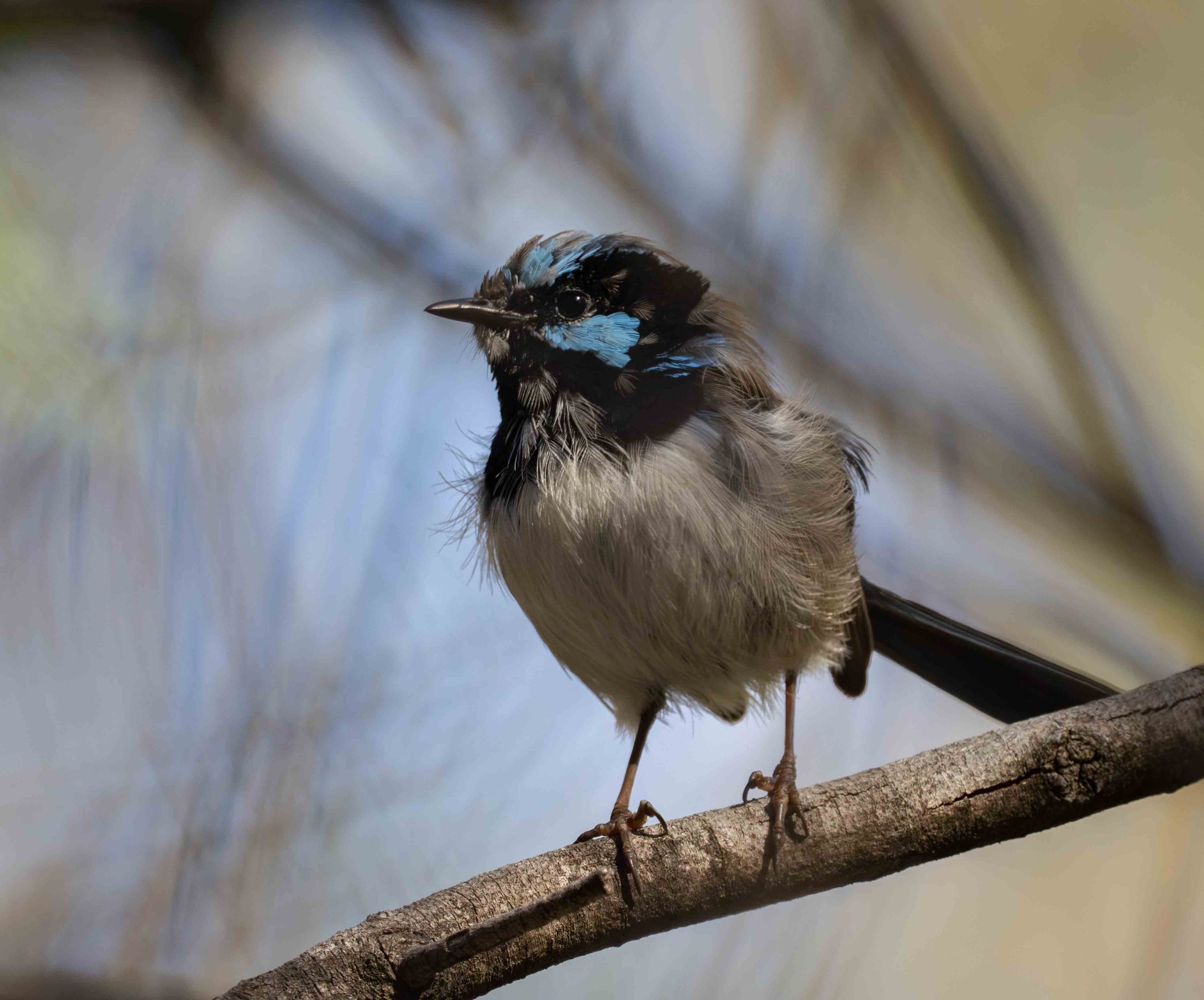
changing plumage
Sporting the first signs of his breeding plumage, this male fairywren (Malurus cyaneus) was looking just a little bit tattered. Now, less than 3 weeks on, he and his fellow males are fully feathered, gorgeous ... and extremely vocal.
Superb Fairywren (link to iNaturalist record)
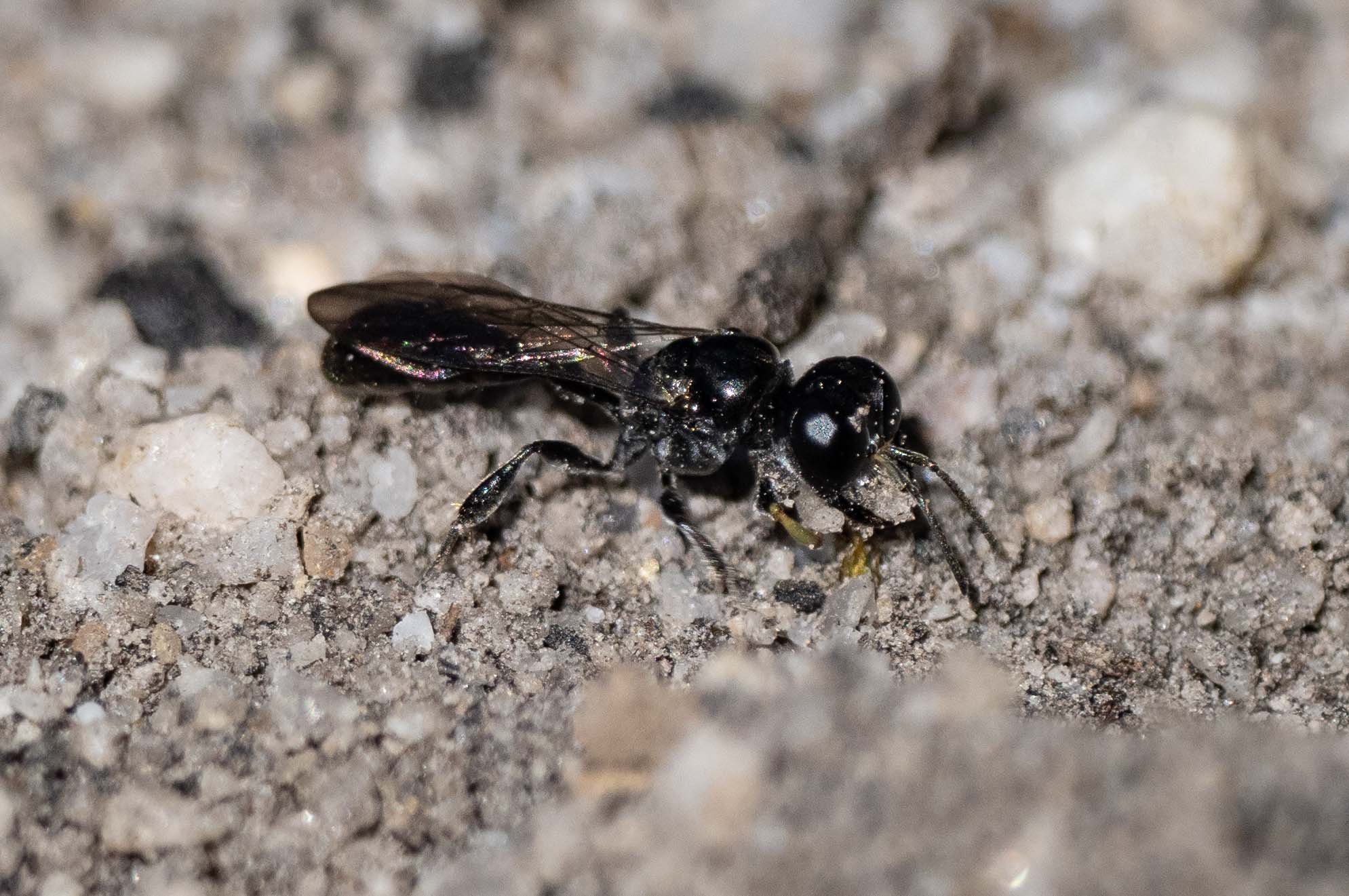
a special crabronid
We discovered this little-known species nesting here a couple of years ago. Having studied them in detail, we are currently preparing a paper for a scientific journal ... as nothing has previously been published about their breeding biology. In the meantime we keep a close watch on their comings and goings. This appearance of a female, digging her burrow in the same patch of bare ground as in previous years, was therefore cause for celebration. By me, anyway. It is also added incentive to get on with that paper!
Rhopalum coriolum
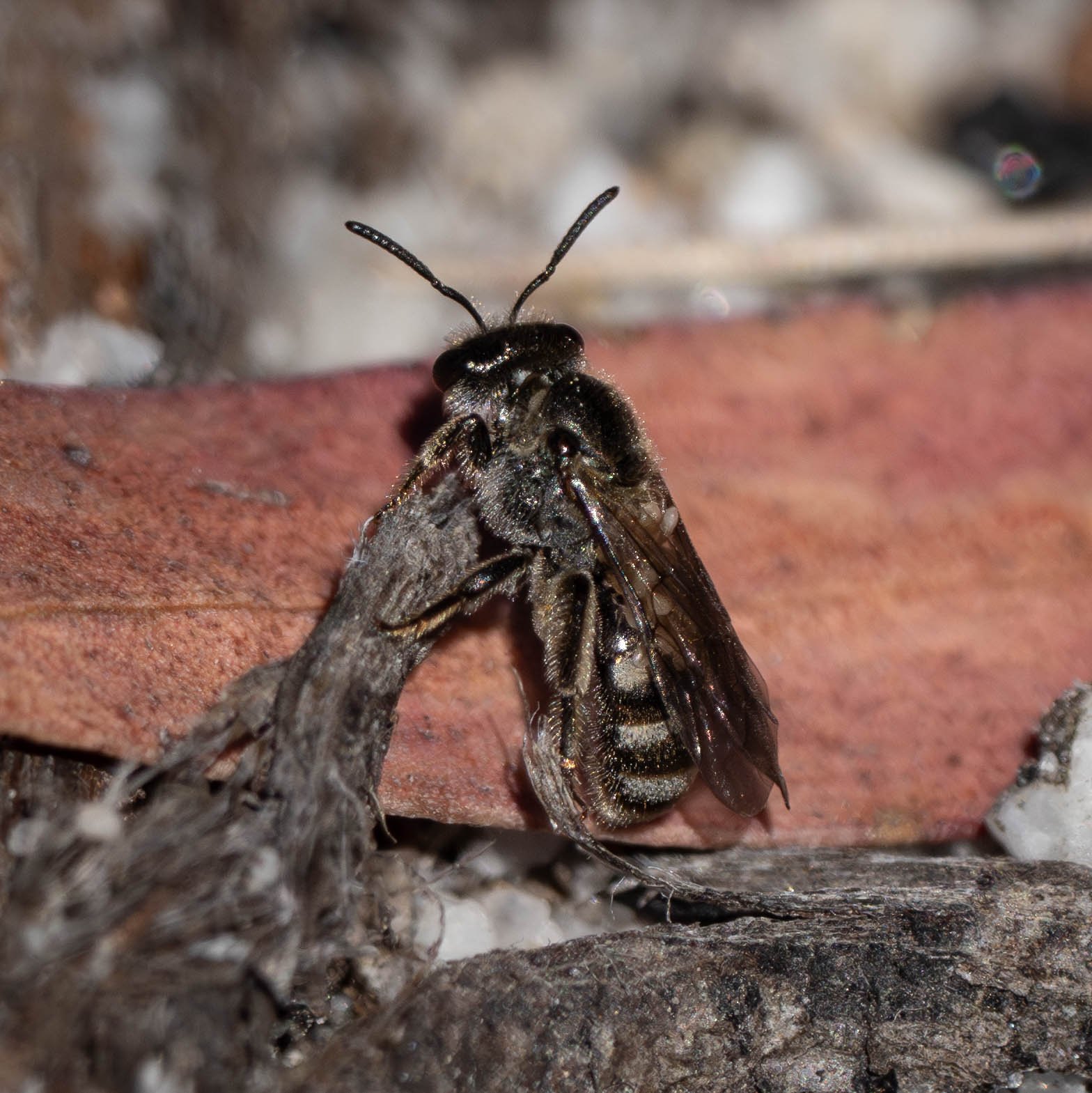
another ground nester
Just centimetres from the nesting crabronid, this small bee was exploring the soil ... probably seeking a nesting site of her own. Most bees in this family are ground-burrowing.
Lasioglossum (link to iNaturalist record)

a second round nectar bar
Although the very first flowers of Leucopogon affinis opened in early August, their flowering is generally later than for Styphelia ericoides, peaking well into September. The bushes are just as showy, the flowers a little larger. And the nectar-feeding insects readily shift their foraging to the new nectar source.
Leucopogon affinis

more yellow peas
This is typically the first of our three Pultenaea species to flower –but not the first yellow pea to appear. Bossiaea cordifolia gets underway in July, Daviesia ulicifolia mid August.
Pultenaea linophylla
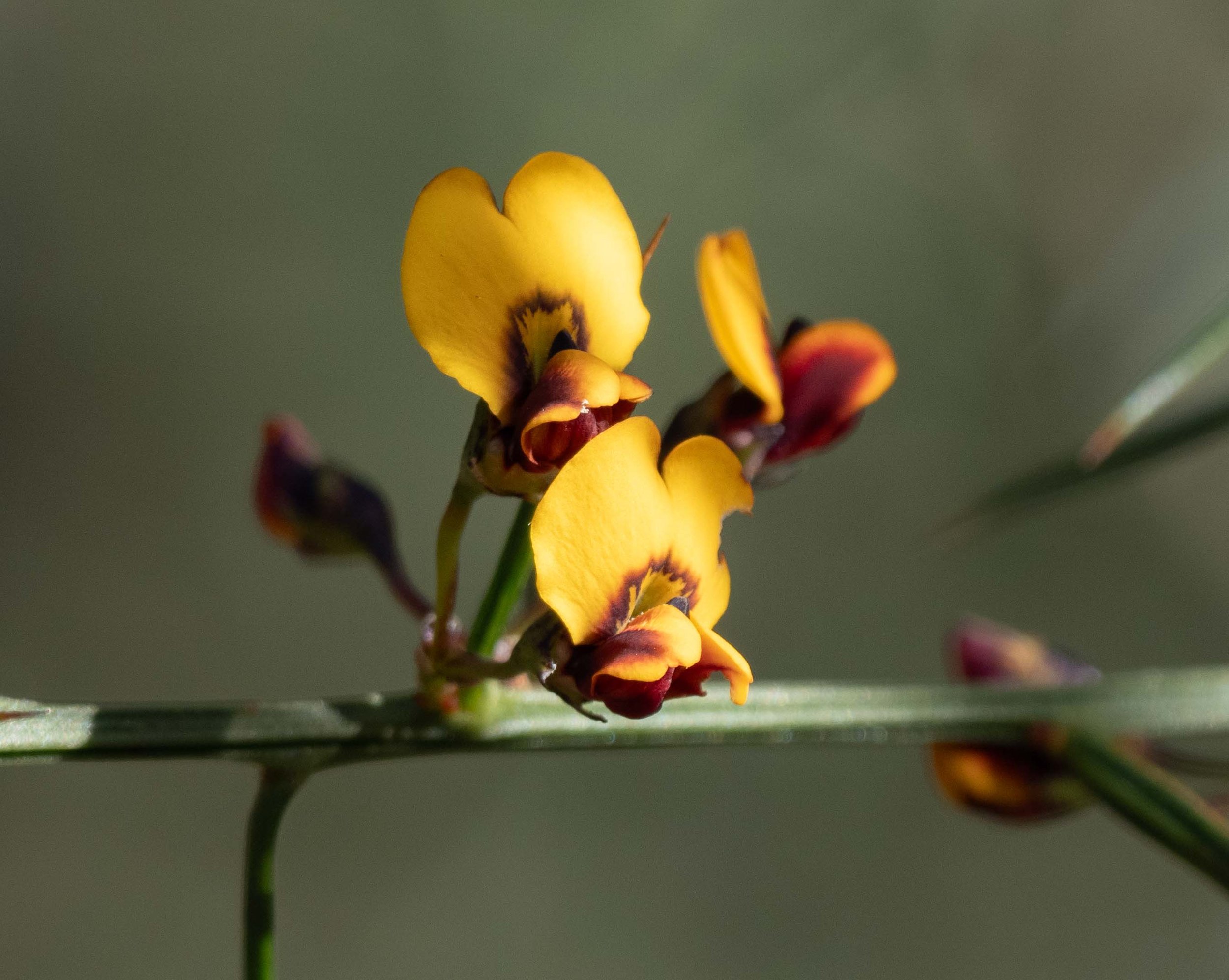
Daviesia
These tough, spine covered bushes tend to grow in the same part of the forest as do the grass trees (Xanthorrhoea). Soil type, perhaps, or just chance. This is one of the least common pea species on our home list.
Daviesia ulicifolia
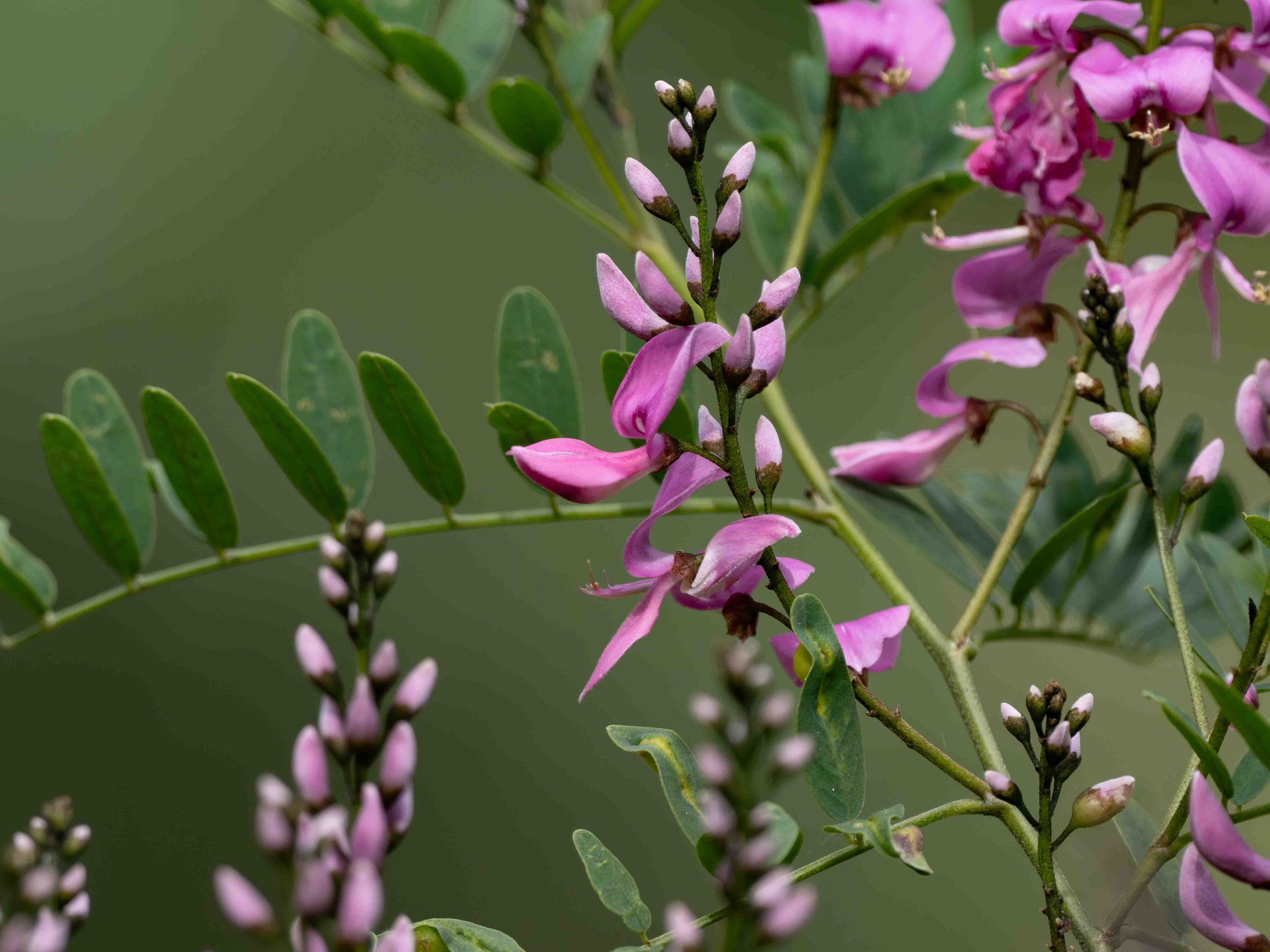
pink peas
Towards the end of August the first Austral Indigo buds opened. The many, spindly bushes reach their flowering peak around mid September.
Indigofera australis (link to iNaturalist record)
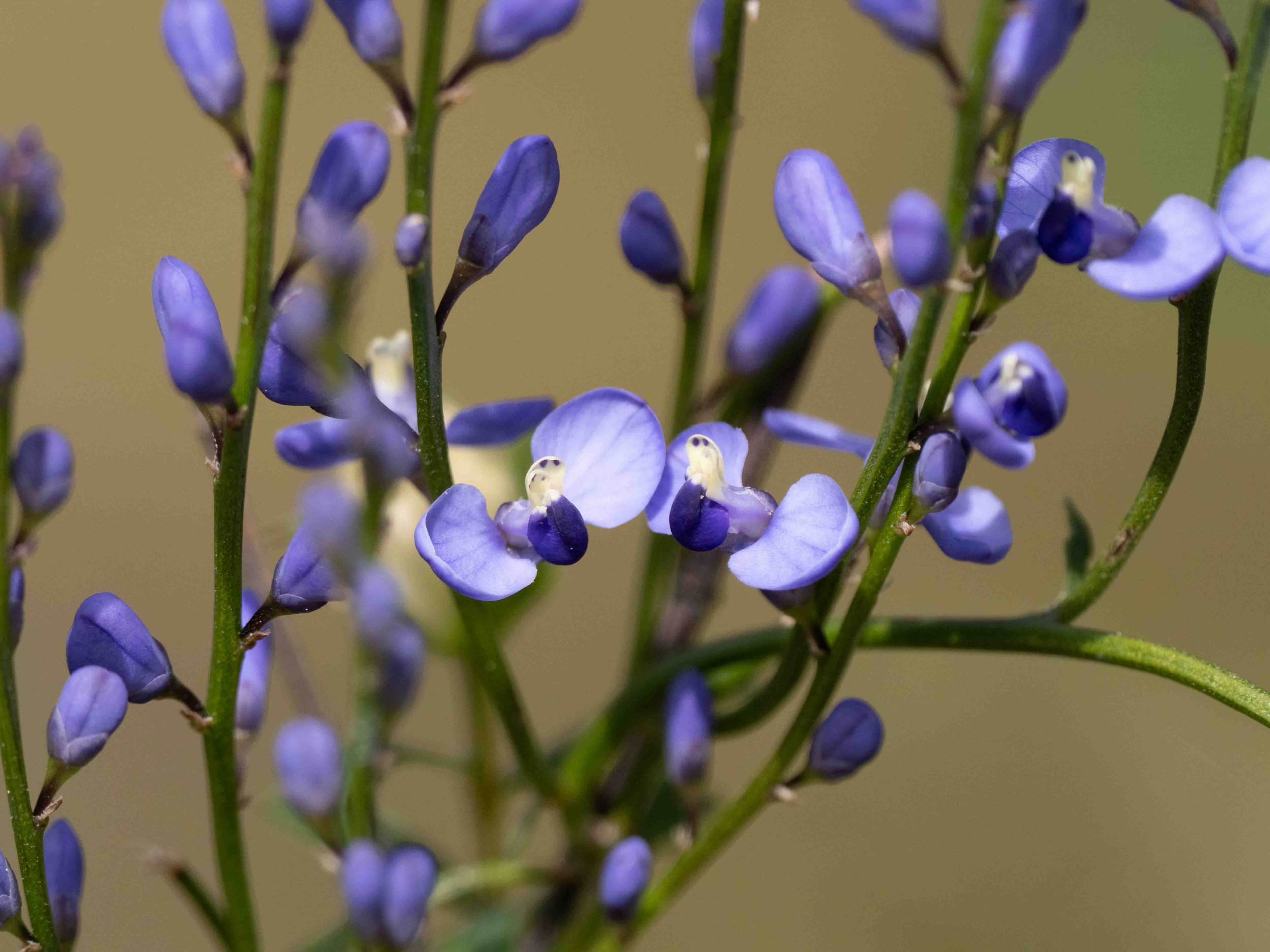
a pretty, twining climber
These were the very first Love Creeper flowers to open ... and when I checked on them the following morning, they were gone. Flowers, buds, the lot. Pesky wallabies!! But no matter. More plants have since bloomed, adding their purple tones to the forest's increasingly colourful flowerscape.
Comesperma volubile (link to iNaturalist record)
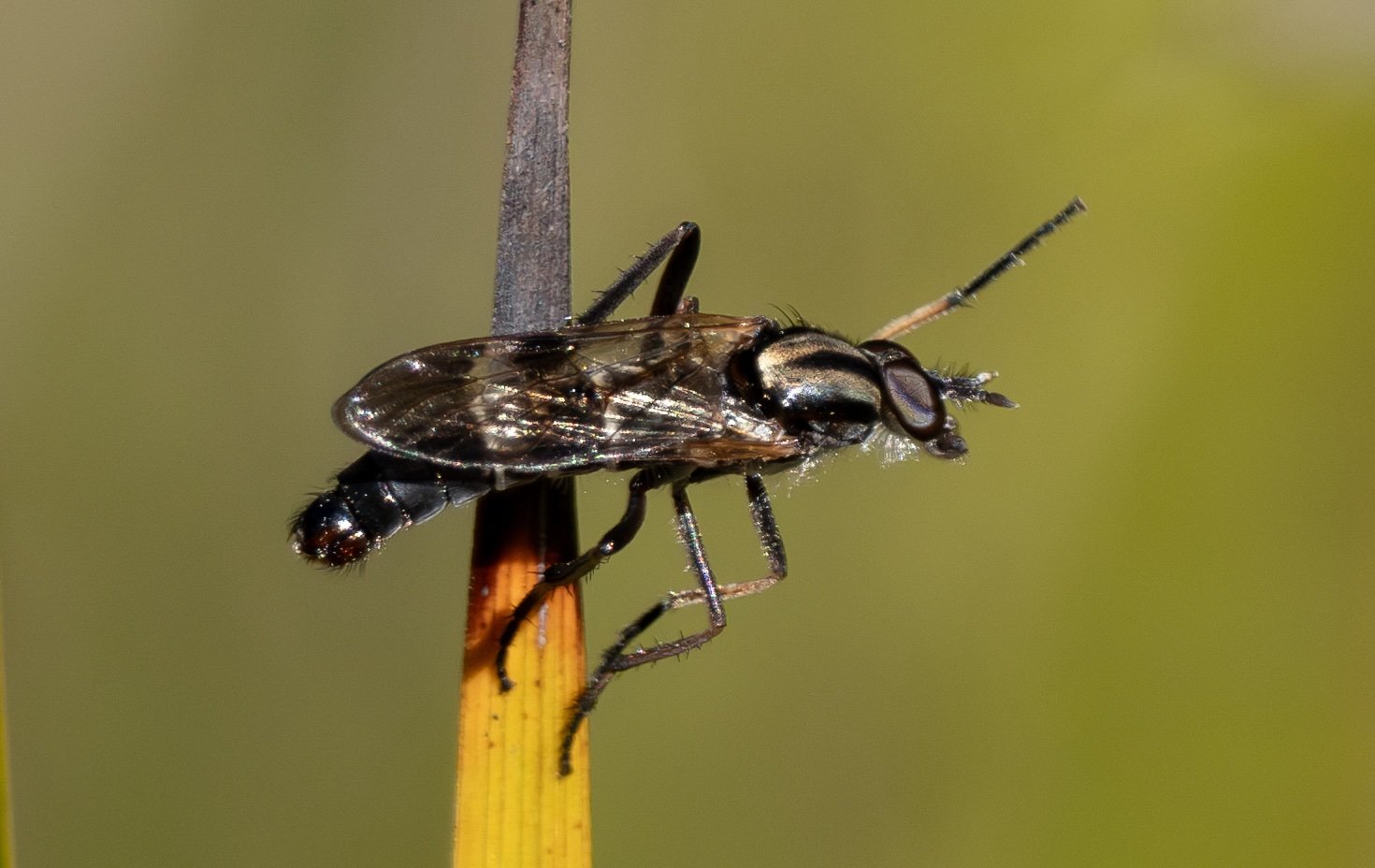
characteristic pose of a stiletto fly
Mating swarms of these stiletto flies (Therevidae) superficially resemble those of dance flies (Empididae). Males circle and hover a metre or so above the ground, particularly when the sun shines and the wind is light. Their styles are distinctive, however. Most notably, Ectinorhynchus rely on arm waving rather than nuptial gift giving.
Ectinorhyncus (link to iNaturalist record)





























